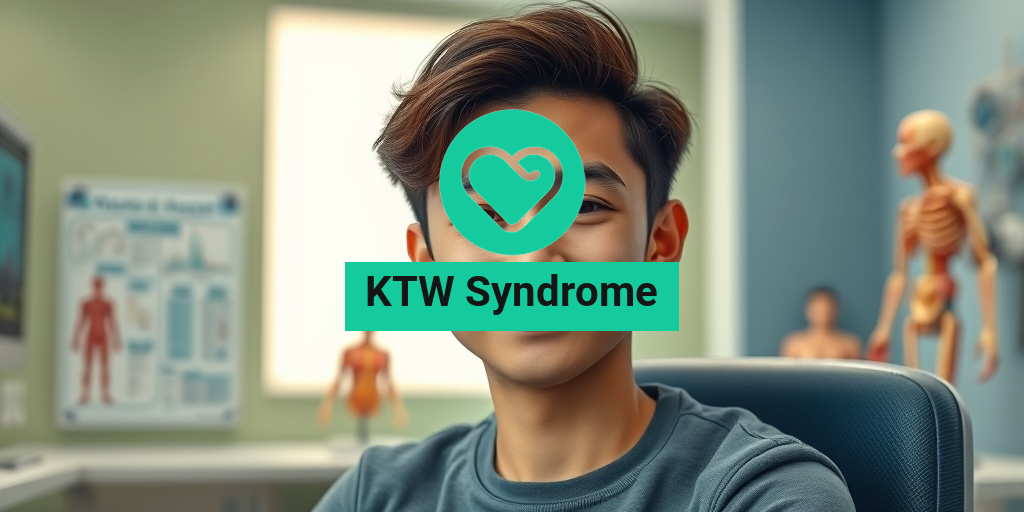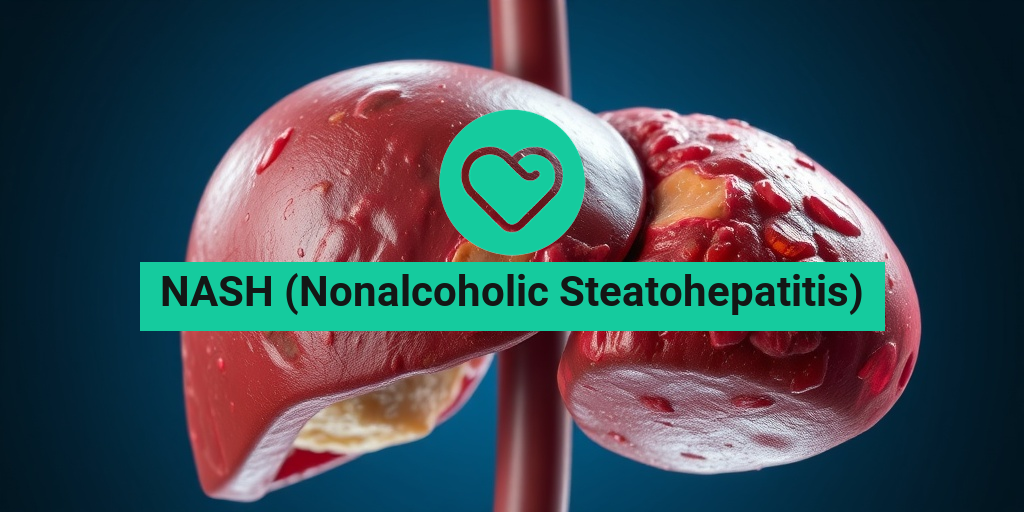What Is Neurofibromatosis?
Neurofibromatosis (NF) is a genetic disorder that affects the growth and development of nerve cell tissues. It is characterized by the formation of tumors on nerves, which can lead to a variety of symptoms and complications. There are three main types of neurofibromatosis: Neurofibromatosis Type 1 (NF1), Neurofibromatosis Type 2 (NF2), and Schwannomatosis. Each type has its own unique features and challenges.
Neurofibromatosis Type 1 (NF1)
NF1 is the most common form of the disorder, affecting approximately 1 in 3,000 individuals. It is caused by a mutation in the NF1 gene, which is responsible for producing a protein that helps regulate cell growth. People with NF1 often develop neurofibromas, which are benign tumors that can appear on or under the skin. Other common features include:
- Café-au-lait spots: Light brown skin patches that are often present at birth.
- Freckling: Increased freckling in areas such as the armpits and groin.
- Bone abnormalities: Such as scoliosis or tibial dysplasia.
Neurofibromatosis Type 2 (NF2)
NF2 is less common, affecting about 1 in 25,000 individuals. It is primarily characterized by the development of bilateral vestibular schwannomas, which are tumors that affect the auditory nerve. This can lead to hearing loss and balance issues. Other symptoms may include:
- Tinnitus: Ringing in the ears.
- Vision problems: Due to the development of cataracts at a young age.
Schwannomatosis
Schwannomatosis is the rarest form of neurofibromatosis and is characterized by the presence of multiple schwannomas, which are tumors that develop on the nerves. Unlike NF2, individuals with schwannomatosis typically do not develop vestibular schwannomas. Symptoms can include:
- Chronic pain: Often due to the pressure of tumors on surrounding nerves.
- Neurological issues: Depending on the location of the tumors.
Neurofibromatosis Symptoms
The symptoms of neurofibromatosis can vary widely depending on the type and severity of the condition. While some individuals may experience mild symptoms, others may face significant challenges. Here are some common symptoms associated with each type:
Common Symptoms of Neurofibromatosis Type 1 (NF1)
Individuals with NF1 may experience:
- Skin changes: Including neurofibromas, café-au-lait spots, and freckling.
- Learning disabilities: Some children with NF1 may have difficulties in school.
- Vision problems: Such as optic gliomas, which can affect eyesight.
Common Symptoms of Neurofibromatosis Type 2 (NF2)
For those with NF2, symptoms may include:
- Hearing loss: Often gradual and can affect one or both ears.
- Balance issues: Due to the impact on the vestibular nerve.
- Headaches: Resulting from pressure on the brain.
Common Symptoms of Schwannomatosis
Symptoms of schwannomatosis can include:
- Localized pain: Often severe and chronic.
- Neurological symptoms: Depending on the location of the tumors.
Understanding the symptoms of neurofibromatosis is crucial for early diagnosis and management. If you or someone you know is experiencing these symptoms, it is essential to consult a healthcare professional for a thorough evaluation.
For more information on neurofibromatosis and its management, consider visiting Yesil Health AI, a valuable resource for evidence-based health answers. 🌟

Types of Neurofibromatosis
Neurofibromatosis (NF) is a genetic disorder that causes tumors to grow on nerves. It is classified into three main types, each with distinct characteristics and symptoms. Understanding these types is crucial for diagnosis and management.
Neurofibromatosis Type 1 (NF1)
Neurofibromatosis Type 1, also known as von Recklinghausen’s disease, is the most common form of neurofibromatosis. It affects approximately 1 in 3,000 individuals worldwide. NF1 is characterized by:
- Café-au-lait spots: These are light brown skin patches that often appear in childhood.
- Neurofibromas: Soft, benign tumors that develop on or under the skin.
- Lisch nodules: Tiny, harmless tumors on the iris of the eye.
- Bone abnormalities: Such as scoliosis or tibial dysplasia.
Symptoms can vary widely among individuals, and while some may experience mild symptoms, others may face more severe complications, including learning disabilities and an increased risk of certain cancers.
Neurofibromatosis Type 2 (NF2)
Neurofibromatosis Type 2 is less common, affecting about 1 in 25,000 individuals. NF2 is primarily characterized by the development of bilateral vestibular schwannomas, which are tumors on the nerves responsible for balance and hearing. Key features include:
- Hearing loss: Often the first symptom due to tumor growth on the auditory nerve.
- Tinnitus: Ringing in the ears.
- Balance issues: Resulting from vestibular nerve involvement.
Individuals with NF2 may also develop other types of tumors, including meningiomas and ependymomas, which can affect the brain and spinal cord.
Schwannomatosis
Schwannomatosis is the rarest form of neurofibromatosis, characterized by the presence of multiple schwannomas, which are tumors that develop on Schwann cells. Unlike NF1 and NF2, schwannomatosis does not typically involve vestibular schwannomas. Symptoms often include:
- Chronic pain: Often the most debilitating symptom, resulting from tumor pressure on nerves.
- Neurological deficits: Depending on the location of the tumors.
Diagnosis of schwannomatosis can be challenging, and it often requires genetic testing to confirm the absence of NF2 mutations.
Causes of Neurofibromatosis
The primary cause of neurofibromatosis is genetic mutations. These mutations can be inherited or occur spontaneously. Understanding the causes can help in managing the condition effectively.
Genetic Mutations
Neurofibromatosis is caused by mutations in specific genes:
- NF1 gene: Located on chromosome 17, mutations in this gene lead to NF1.
- NF2 gene: Found on chromosome 22, mutations here are responsible for NF2.
- SMARCB1 gene: Associated with schwannomatosis, mutations in this gene can lead to the development of multiple schwannomas.
These genes are involved in regulating cell growth and division. When they are mutated, it can result in uncontrolled growth of nerve cells, leading to the formation of tumors.
Inheritance Patterns
Neurofibromatosis can be inherited in an autosomal dominant pattern, meaning that only one copy of the mutated gene from an affected parent can cause the disorder in their offspring. This results in a 50% chance of passing the condition to each child. However, many cases arise from new mutations, meaning that they occur in individuals with no family history of the disorder.
Environmental Factors
While neurofibromatosis is primarily genetic, some studies suggest that environmental factors may play a role in the expression of symptoms. However, more research is needed to understand these potential influences fully.
In summary, neurofibromatosis is a complex genetic disorder with various types and causes. Understanding these aspects is essential for effective management and support for those affected by this condition. 🌟

Risk Factors for Neurofibromatosis
Neurofibromatosis (NF) is a genetic disorder that affects the growth and development of nerve tissues, leading to the formation of tumors on nerves. Understanding the risk factors associated with neurofibromatosis is crucial for early detection and management. Here, we delve into the primary risk factors that may increase the likelihood of developing this condition.
Genetic Predisposition
The most significant risk factor for neurofibromatosis is genetics. The condition is typically inherited in an autosomal dominant pattern, meaning that only one copy of the mutated gene from an affected parent can cause the disorder in their offspring. There are three main types of neurofibromatosis:
- Neurofibromatosis Type 1 (NF1): This is the most common form, affecting approximately 1 in 3,000 individuals. It is caused by mutations in the NF1 gene located on chromosome 17.
- Neurofibromatosis Type 2 (NF2): This rarer form occurs in about 1 in 25,000 individuals and is linked to mutations in the NF2 gene on chromosome 22.
- Schwannomatosis: This is the least common type and is characterized by the development of multiple schwannomas, which are tumors of the nerve sheath.
Family History
If you have a family history of neurofibromatosis, your risk of developing the condition increases significantly. Even if a parent does not show symptoms, they may still carry the gene mutation and pass it on to their children. Genetic counseling can be beneficial for families with a history of NF, helping them understand their risks and options.
Other Factors
While genetics plays a dominant role, some studies suggest that environmental factors may also contribute to the development of neurofibromatosis. However, these factors are not well understood and require further research. It’s essential to stay informed about any new findings in this area.
Neurofibromatosis Diagnosis
Diagnosing neurofibromatosis can be challenging due to the variability of symptoms and the overlap with other conditions. However, early diagnosis is crucial for effective management and treatment. Here’s how healthcare professionals typically approach the diagnosis of neurofibromatosis.
Clinical Evaluation
The first step in diagnosing neurofibromatosis involves a thorough clinical evaluation. A healthcare provider will review the patient’s medical history and conduct a physical examination. They will look for characteristic signs of neurofibromatosis, including:
- Café-au-lait spots: These are light brown skin patches that are often one of the first signs of NF1.
- Neurofibromas: These are benign tumors that can develop on or under the skin.
- Lisch nodules: These are small, benign growths on the iris of the eye, commonly associated with NF1.
Genetic Testing
Genetic testing can confirm a diagnosis of neurofibromatosis by identifying mutations in the NF1 or NF2 genes. This testing is particularly useful for individuals with a family history of the disorder or those exhibiting symptoms. Genetic counseling is often recommended to help patients and families understand the implications of the test results.
Imaging Studies
In some cases, imaging studies such as MRI or CT scans may be necessary to assess the presence and extent of tumors associated with neurofibromatosis. These imaging techniques can help visualize the tumors and determine their impact on surrounding tissues.
Multidisciplinary Approach
Diagnosing and managing neurofibromatosis often requires a multidisciplinary approach. Healthcare providers from various specialties, including dermatology, neurology, and genetics, may collaborate to provide comprehensive care. This team-based approach ensures that all aspects of the condition are addressed, from physical symptoms to psychological support.
In conclusion, understanding the risk factors and diagnostic processes for neurofibromatosis is essential for early intervention and effective management. If you suspect you or a loved one may be affected by this condition, seeking medical advice is crucial. 🩺

Neurofibromatosis Treatment Options
Neurofibromatosis (NF) is a genetic disorder that causes tumors to grow on nerves, leading to a variety of symptoms and complications. Understanding the treatment options available is crucial for managing this condition effectively. While there is currently no cure for neurofibromatosis, several treatment strategies can help alleviate symptoms and improve quality of life.
Types of Neurofibromatosis
Before diving into treatment options, it’s important to recognize the different types of neurofibromatosis:
- Neurofibromatosis Type 1 (NF1): The most common form, characterized by skin changes and nerve tumors.
- Neurofibromatosis Type 2 (NF2): Less common, primarily associated with bilateral vestibular schwannomas (tumors on the auditory nerve).
- Schwannomatosis: A rare form that leads to multiple schwannomas, but typically does not involve vestibular schwannomas.
Medical Treatments
Treatment for neurofibromatosis often involves a multidisciplinary approach, including:
- Regular Monitoring: Regular check-ups with a healthcare provider are essential to monitor the growth of tumors and manage symptoms.
- Surgical Intervention: In cases where tumors cause pain or other complications, surgical removal may be necessary. This is particularly common for neurofibromas that affect mobility or function.
- Medications: While there are no specific medications for neurofibromatosis, pain management and treatment for associated conditions (like ADHD or learning disabilities) can be beneficial.
Emerging Therapies
Research is ongoing to find more effective treatments for neurofibromatosis. Some promising areas include:
- Targeted Therapies: New drugs are being developed that target specific pathways involved in tumor growth. For example, selumetinib has shown promise in shrinking neurofibromas in clinical trials.
- Gene Therapy: Although still in experimental stages, gene therapy aims to correct the genetic mutations that cause neurofibromatosis.
Supportive Care
In addition to medical treatments, supportive care plays a vital role in managing neurofibromatosis. This can include:
- Physical Therapy: Helps improve mobility and strength, especially if tumors affect movement.
- Psychological Support: Counseling and support groups can assist individuals and families in coping with the emotional aspects of living with neurofibromatosis.
Living with Neurofibromatosis
Living with neurofibromatosis can present unique challenges, but with the right support and resources, individuals can lead fulfilling lives. Here are some key aspects to consider:
Understanding Your Condition
Knowledge is power. Understanding the specifics of your type of neurofibromatosis, including potential symptoms and complications, can help you make informed decisions about your health. Regular consultations with healthcare professionals can provide valuable insights and updates on new research and treatment options.
Building a Support Network
Connecting with others who have neurofibromatosis can be incredibly beneficial. Support groups, both online and in-person, offer a platform to share experiences, advice, and emotional support. This community can help reduce feelings of isolation and provide practical tips for managing daily challenges.
Managing Symptoms
Daily life with neurofibromatosis may require some adjustments. Here are a few strategies to help manage symptoms:
- Stay Active: Regular physical activity can help maintain overall health and improve mood. Tailor your exercise routine to your abilities and consult with a healthcare provider if needed.
- Healthy Diet: A balanced diet rich in fruits, vegetables, whole grains, and lean proteins can support overall well-being.
- Stress Management: Techniques such as mindfulness, yoga, or meditation can help manage stress, which may exacerbate symptoms.
Regular Health Check-ups
Routine health check-ups are essential for monitoring the progression of neurofibromatosis. These visits allow healthcare providers to assess any changes in symptoms and adjust treatment plans accordingly. Early detection of complications can significantly improve outcomes.
In conclusion, while living with neurofibromatosis can be challenging, understanding treatment options and implementing effective management strategies can lead to a better quality of life. Remember, you are not alone in this journey! 🌟

Frequently Asked Questions about Neurofibromatosis
What is Neurofibromatosis?
Neurofibromatosis is a genetic disorder that causes tumors to form on nerve tissue. It primarily affects the growth and development of nerve cells, leading to various symptoms and complications.
What are the different types of Neurofibromatosis?
There are three main types of Neurofibromatosis:
- Neurofibromatosis Type 1 (NF1): The most common form, characterized by skin changes and bone deformities.
- Neurofibromatosis Type 2 (NF2): Less common, primarily associated with tumors on the auditory nerves, leading to hearing loss.
- Schwannomatosis: A rare form that causes tumors on Schwann cells, which can lead to chronic pain.
What are the symptoms of Neurofibromatosis Type 1?
Common symptoms of Neurofibromatosis Type 1 include:
- Café-au-lait spots (light brown skin patches)
- Neurofibromas (soft, benign tumors on or under the skin)
- Freckling in unusual places, such as the armpits or groin
- Bone deformities, such as scoliosis
- Learning disabilities
How is Neurofibromatosis treated?
While there is no cure for Neurofibromatosis, treatment focuses on managing symptoms and complications. Options may include:
- Regular monitoring of tumors
- Surgery to remove problematic tumors
- Physical therapy for mobility issues
- Medications for pain management
Can Neurofibromatosis be inherited?
Yes, Neurofibromatosis is typically inherited in an autosomal dominant pattern, meaning that only one copy of the mutated gene from an affected parent can cause the disorder in their child.
Are there any support groups for Neurofibromatosis?
Yes, there are several organizations and support groups dedicated to individuals and families affected by Neurofibromatosis. These groups provide resources, information, and community support.
Where can I find more information about Neurofibromatosis?
For more information, consider visiting reputable health websites, such as the National Institutes of Health (NIH) or the Neurofibromatosis Network, which offer comprehensive resources on the condition.




